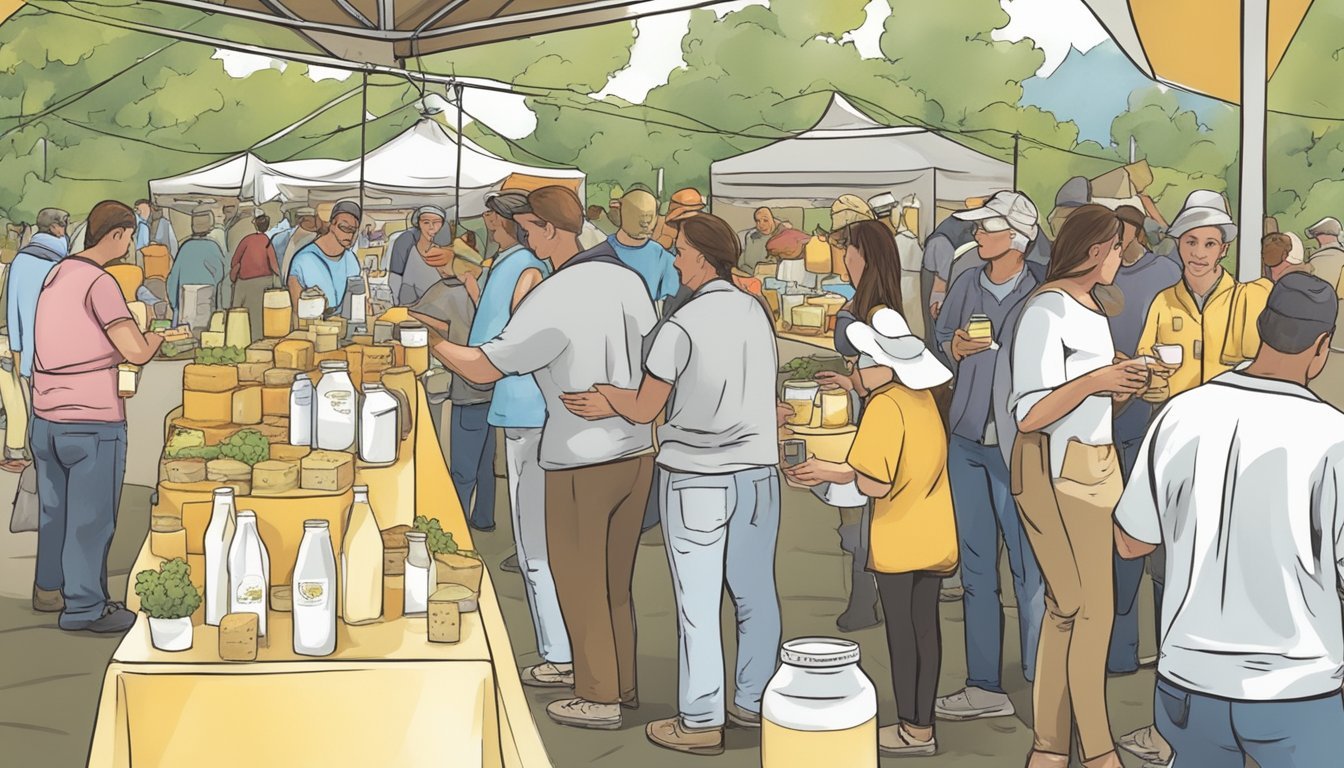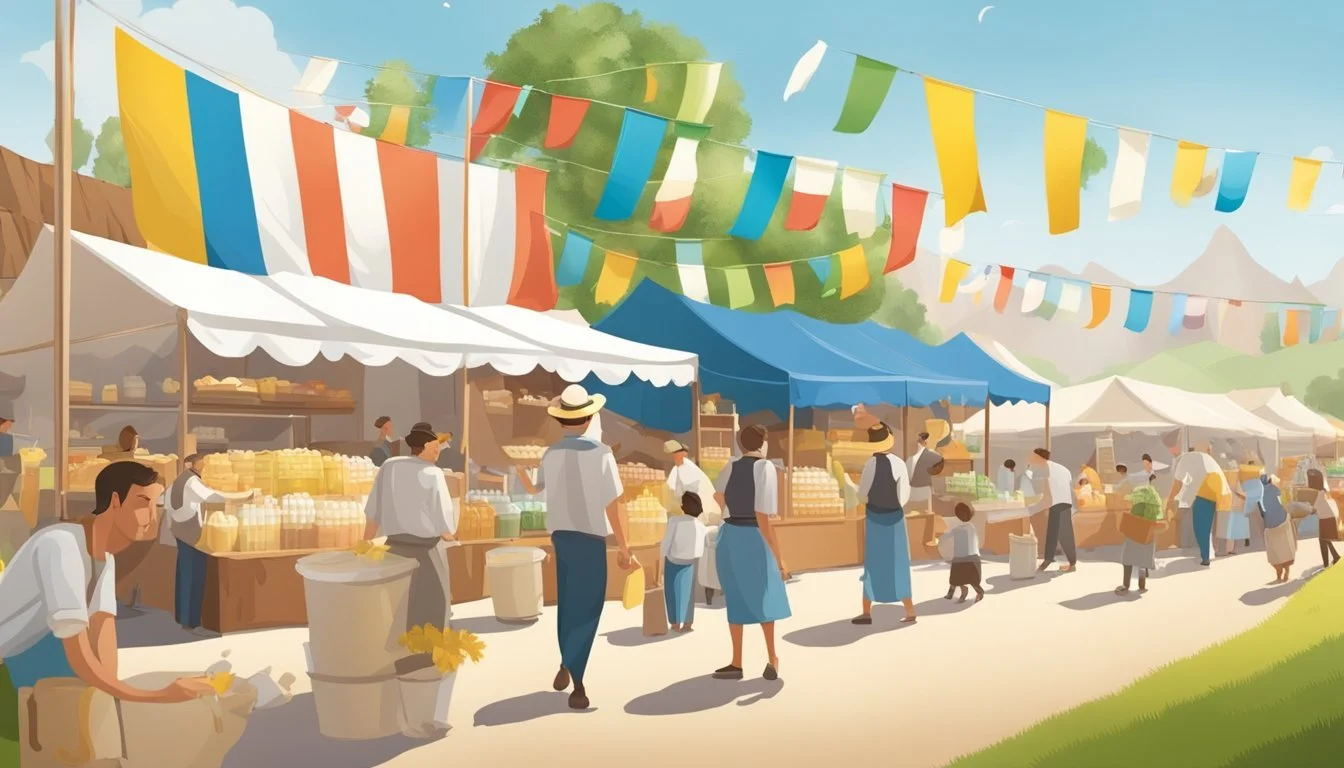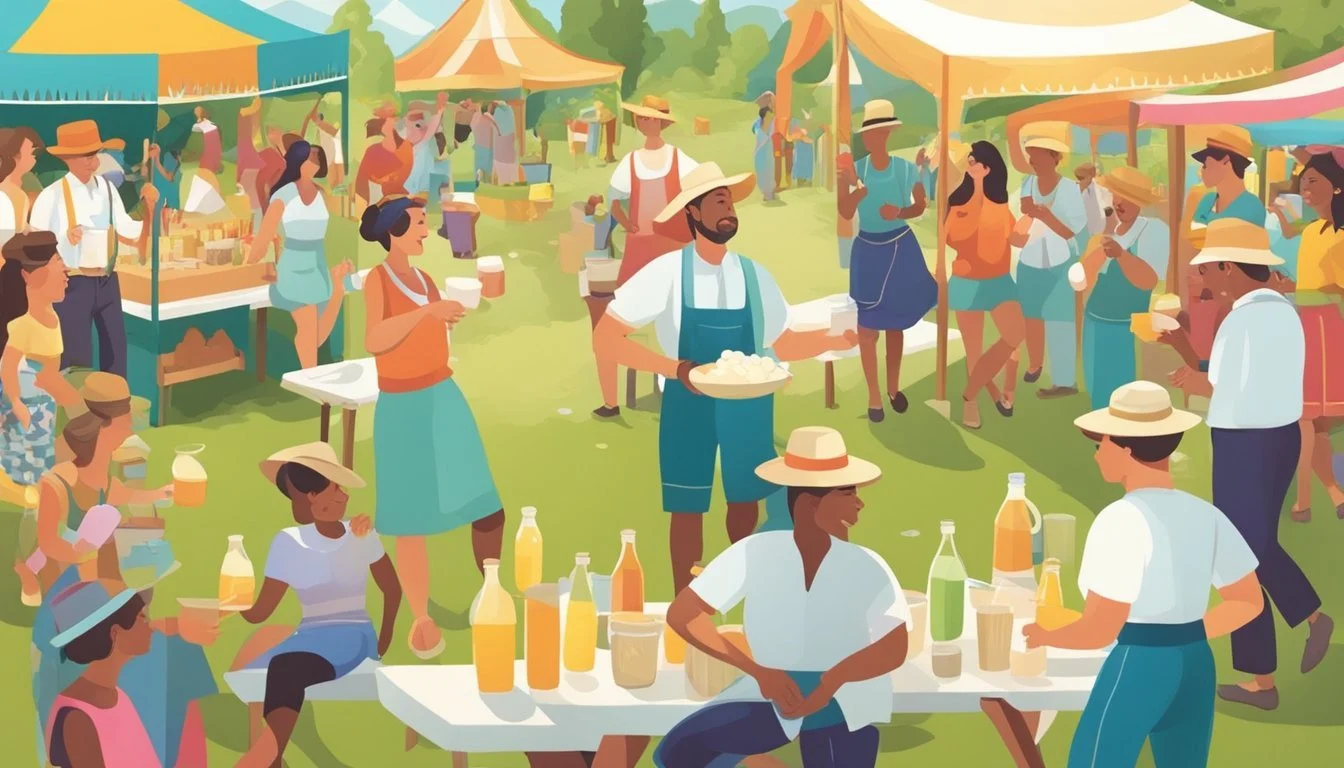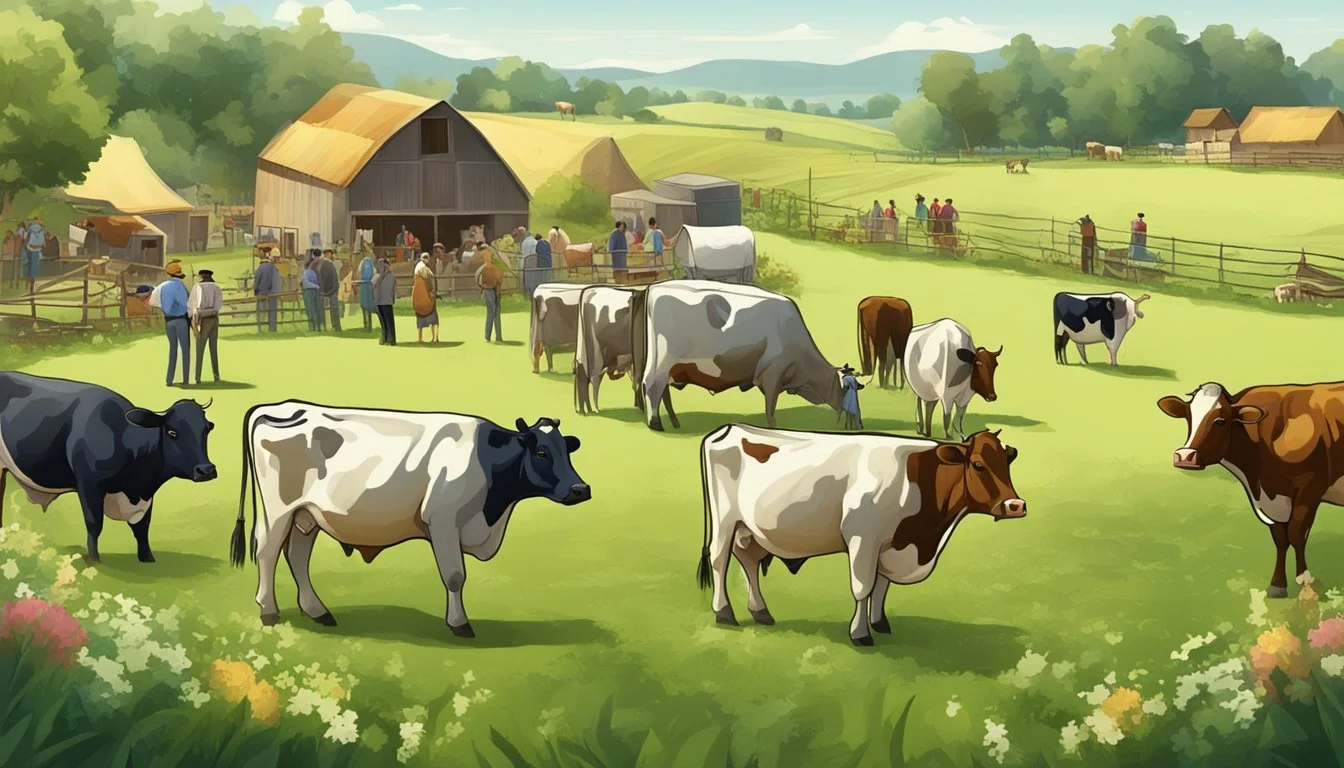Celebrating Raw Milk
A Guide to Dairy Delights and Learning Opportunities
Across the globe, raw milk and its byproducts have played a significant role in culinary cultures. Among these, raw milk cheese stands as a testament to traditional methods of cheesemaking. These cheeses, crafted from unpasteurized milk, are celebrated for their complex flavors and heritage. Educators, enthusiasts, and producers alike come together in various events to honor the art of raw milk cheesemaking, fostering appreciation and knowledge about these artisanal products.
One notable event dedicated to raw milk cheese is the International Raw Milk Cheese Appreciation Day. Established by the Oldways Cheese Coalition, this day aims to highlight the diversity, taste, and traditions of raw milk cheeses. Consumers are encouraged to explore and taste different raw milk cheeses, thereby increasing awareness and advocacy for these traditionally made products.
Educational events and festivals not only act as celebrations but also as pivotal platforms for sharing knowledge and practices related to raw milk. These gatherings often feature tastings, workshops, and discussions led by experts in the field. They serve to preserve the culture and tradition of raw milk production while also addressing the safety, regulatory, and health aspects associated with raw milk consumption.
Celebrating raw milk is a testament to the rich tapestry of traditions and practices that honor its significance in culinary heritage and sustainable living. The dedication and hard work of the raw milk farmer life are reflected in the exceptional quality of pasture-raised milk, which embodies the natural essence of the land and contributes to the unique flavor profile of raw milk.
Embracing the raw milk flavor tradition is a celebration of cultural diversity and culinary heritage, deeply intertwined with European diets and sustainable raw milk homesteading practices. The commitment to preserving the freshness and quality of raw milk involves innovative raw milk storage solutions, ensuring that its natural richness and nutritional value are safeguarded.
Celebrating raw milk encompasses a deep appreciation for the interconnectedness of nature, tradition, and sustainable living. It honors the dedication of raw milk farmers, the exceptional quality of pasture-raised milk, and the cultural significance of raw milk in culinary traditions. This celebration reflects a commitment to preserving the heritage and natural goodness of raw milk for generations to come.
The Basics of Raw Milk
Raw milk refers to milk from cows, sheep, or goats that has not undergone pasteurization or homogenization. This section explores the foundational aspects of raw milk and its comparison to pasteurized milk.
Understanding Raw Milk
Raw milk is essentially milk in its most natural state as it comes directly from the animal without any thermal processing. Taste is often cited as a reason for choosing raw over pasteurized milk, as it retains the flavor nuances of the specific dairy herd's diet. Raw milk may also contain natural enzymes and beneficial bacteria, which proponents argue can aid in digestion, particularly for individuals with lactose intolerance.
Comparing Pasteurization and Unprocessed Milk
Pasteurization is a process that heats milk to a specific temperature for a set period. This technique effectively kills potentially harmful bacteria and extends the shelf life of dairy products. Pasteurized milk is widely consumed and recognized for its safety and uniform taste. In contrast, unprocessed raw milk can vary in taste and nutritional content based on numerous factors, including the animal's breed and diet. It's important for consumers to understand that while raw milk offers a different experience in terms of flavor and potential health benefits, it also carries a risk of containing pathogens that can cause illness.
Health Aspects of Raw Milk
Raw milk's health aspects are multifaceted, encompassing nutritional benefits and the potential for harmful pathogens. It is essential to weigh the health benefits against the risks and to consider the impact of regulation on public health.
Benefits of Raw Milk Consumption
Supporters of raw milk consumption argue that it is an unprocessed food that retains its natural probiotics, enzymes, and vitamins which may be diminished during the pasteurization process. They claim that raw milk can contribute to strengthening the immune system and provide protection against asthma and allergies, particularly in children.
Potential Health Risks
On the other side, raw milk poses significant health risks due to the potential presence of harmful bacteria such as Salmonella, E. coli, and Listeria. These pathogens can lead to serious health conditions, including gastrointestinal illness, kidney failure, and in some cases, death. Pregnant women are especially advised to avoid raw milk due to the risk of miscarriage or neonatal complications associated with Listeria infections.
Public Health and Regulation
Public health organizations, including the Centers for Disease Control and Prevention (CDC), advocate for strict regulation of milk, including the requirement of pasteurization to ensure safety. Regulations vary by state, with some allowing the sale of raw milk directly to consumers and others prohibiting it. Educational materials are vital to inform the public about the risks associated with raw milk consumption, advocating for informed choices and safe handling practices.
Legal Landscape and Accessibility
In the United States, the legal status of raw milk varies widely state by state, reflecting a diverse regulatory landscape. Federal guidelines are imposed on interstate sales, while individual states dictate their own laws for in-state raw milk transactions.
FDA and Interstate Sale Policies
The Food and Drug Administration (FDA) explicitly prohibits the interstate sale of raw milk for human consumption. This ban extends to both direct consumer sales and retail distribution across state lines. The FDA maintains this position out of concern for public health, citing the risk of foodborne illnesses from unpasteurized milk that may contain harmful bacteria.
State-Level Regulation
At the state level, regulation of raw milk sales can range from outright bans to more permissive approaches. The legality and accessibility of raw milk purchases are dictated by each state's legislation and public health departments. For example:
Iowa: The state recently joined others in permitting small producers to sell raw milk directly from cows, goats, and sheep. They impose limitations, mandating that raw milk dairies may not exceed a cap of 10 lactating animals.
Other states, such as North Dakota, Utah, Wyoming, Alaska, Montana, New Hampshire, and Texas, have passed legislation allowing various raw milk products to be sold.
States which have legalized raw milk conduct their own testing and safety protocols to manage potential health risks, balancing public health concerns with consumer demand for unpasteurized dairy products.
Oldways Cheese Coalition and #RawCheeseDay
The Oldways Cheese Coalition champions the appreciation and preservation of raw milk cheeses through its signature event, International Raw Milk Cheese Appreciation Day, using the hashtag #RawCheeseDay to foster community involvement and awareness.
Celebrating International Raw Milk Cheese Appreciation Day
International Raw Milk Cheese Appreciation Day is an annual event, orchestrated by the Oldways Cheese Coalition, that shines a spotlight on the rich variety and flavors of raw milk cheeses. Since its inception, cheese enthusiasts convene every year to take part in educational activities, tastings, and to share their experiences. The event encourages visits to local cheese counters, promotes discussions about the cheese-making process, and supports raw milk cheese producers worldwide.
Date for 2021: Saturday, October 16
Activities: Tastings, cheese purchases, social media engagement
Social Media: Tag with #RawCheeseDay
Campaigns to Preserve Cheese Diversity
The Oldways Cheese Coalition not only celebrates but also actively campaigns to preserve diversity in cheese cultures. They recognize raw milk cheeses as an essential part of our cultural heritage and advocate for them as safe, delicious, and culturally significant. The coalition unites cheesemakers, distributors, retailers, and cheese lovers in its mission to maintain the availability and legality of traditional cheeses across the globe.
Founded: In 1999
Mission: Advocacy for cheese diversity and education about traditional cheeses
Membership: Includes cheesemakers, distributors, retailers, and cheese lovers
Raw Milk In Agriculture And Production
In the context of agriculture and production, raw milk plays a distinctive role, with producers focusing on both quality and safety, and cheesemakers leveraging traditional techniques to offer a unique range of flavors.
The Role of Producers
Producers are central to the raw milk narrative within the agriculture industry. They take meticulous care to ensure that raw milk is produced safely, considering that it does not undergo pasteurization. This involves a strict adherence to hygienic handling, feeding cows quality forage, and regular health screenings. Dairy farmers may engage in small-scale production, where a more personalized approach to dairy farming is possible. This allows them to enhance their economic benefit while providing consumers with high-quality raw milk products.
Cheesemaking Techniques
When it comes to cheesemaking, the techniques employed in raw milk cheese production are traditional and time-honored. Raw milk's natural enzymes and beneficial bacteria play a vital role in developing complex flavors and textures that usually get eliminated in pasteurized varieties. Cheesemakers must be proficient in understanding the microbiology involved to ensure product safety. Regulations differ globally; for instance, some countries have stringent standards regarding bacterial counts such as E.coli in raw milk cheese to ensure that only safe, high-quality products reach consumers.
Communities and Market Dynamics
In the ecosystem of raw milk, numerous stakeholders ranging from importers and retailers to consumers interact and shape market dynamics. Crucial to this system are education and informed purchasing, which serve as the foundation for a robust community.
Connecting Importers, Retailers, and Consumers
Raw milk communities thrive on the connections forged between those who import, distribute, and consume the product. Importers establish relationships with retailers to ensure a steady supply of raw milk, usually adhering to strict safety and quality standards. Retailers, in turn, offer diverse points of sale, including farmers' markets, co-ops, and specialized food stores. Consumers benefit from this network with wider access to raw milk and the ability to support local economies.
Importers: Collaborate with international and local farms
Retailers: Diverse sales points ensure broader consumer access
Consumers: Demand quality and support local businesses
Educating Consumers and Encouraging Informed Purchase
The growth of the raw milk market is significantly influenced by consumer education. Education initiatives aim to inform consumers about the benefits and risks associated with raw milk consumption. These efforts encourage consumers to make more informed purchase decisions, fostering a market that prioritizes safety and quality. Learning tools include:
Workshops and seminars
Printed materials, such as brochures and fact sheets
Online resources and social media campaigns
Consumers who are well-informed are more likely to engage with retailers and importers in meaningful ways, contributing to a sustainable and transparent market environment.
Cultural and Educational Events
Cultural and educational events play a pivotal role in spreading awareness and appreciation of raw milk cheese. Through festivals, fairs, educational workshops, and tastings, attendees gain firsthand experience of the unique flavors and artisanal qualities that raw milk cheese offers.
Festivals and Fairs Showcasing Dairy Delicacies
Festivals and fairs devoted to dairy celebrate the rich and complex flavors of raw milk cheese. Raw Milk Cheese Appreciation Day is one such event where enthusiasts can savor an array of cheeses and learn about the distinct taste profiles that unpasteurized milk imparts. At these events, cheese makers and vendors convene to display their craft, offering samples that highlight the deliciousness of their products. Attendees can explore and compare the nuanced differences between raw and pasteurized cheese varieties. These events not only tantalize the palate but also underscore the cultural significance of traditional dairy craftsmanship.
Educational Workshops and Tastings
Educational workshops and tastings provide a more intimate setting for learning about raw milk cheese. These events are designed to educate participants about the subtleties involved in cheese production and the factors that influence flavor, such as terroir and aging processes. Experts often lead guided tastings, during which attendees can taste and understand the characteristics of various raw milk cheeses. This interactive approach to education allows for an in-depth exploration of the topic and enables participants to ask questions and engage in discussions about sustainability, health aspects, and the culinary applications of raw milk cheese.
Pairings and Gastronomy
Engaging in the art of pairing raw milk cheese with various complements like honey and wine elevates the culinary experience. Each combination showcases a balance of flavors that highlight the natural deliciousness of the cheese.
Raw Milk Cheese in Culinary Traditions
Raw milk cheese is deeply embedded in global culinary traditions, revered for preserving the unique microbial terroir of its origin. It stands as a testament to traditional cheesemaking practices, holding a flavor profile that thermally altered cheeses cannot match. The distinct taste of raw milk cheese is significant in various regional cuisines and often forms the cornerstone of a gastronomic identity.
Pairing with Honey, Wine, and More
Proper pairings with raw milk cheese can accentuate its rich and complex flavors. Honey offers a natural, gentle sweetness that complements the creamy texture and savory notes of cheese. Wine, with its varied bouquet, provides an excellent counterpoint to cheese, where the tannins in reds or the crispness of whites create a harmonious taste experience. The act of pairing food and drink is not just about the taste but also understanding how each component interacts with one another to enhance the overall deliciousness.
Examples of Pairings:
Raw Milk Cheese Honey Wine Cheddar Acacia Honey Cabernet Sauvignon Brie Orange Blossom Honey Chardonnay Roquefort Chestnut Honey Sauternes Gouda Clover Honey Merlot
These pairings are a starting point for explorations into the rich world of gastronomy surrounding raw milk cheese.










